Getting Shredded with Crossfit

Metabolic conditioning. Sounds complicated. Sounds scientific. But if you’re a CrossFitter, it sounds like your idea of a good time. Having been around the sport of CrossFit and its elite athletes for over a year now, I’ve noticed an undeniable common denominator: CrossFitters are in really good shape. Shocker, right? According to statistics collected on the CrossFit Games between 2011 and 2015, the average female who goes to Regionals can deadlift 321 pounds, back squat 272 pounds, do 42 consecutive pull-ups, and also run 400 metres in 1:09—all at a bodyweight of 142 pounds. The average man can deadlift 499 pounds, back squat 431 pounds, do 57 pull-ups, and run 400 metres in 1:06 at a bodyweight of 191 pounds. If these numbers sound impressive, it’s probably because they are.
But all these numbers aside, you can see a CrossFitter’s dedication and the type of body that this training yields just by looking at them. There’s no denying it; there’s something about the combination of strength, cardio, agility, and metabolic conditioning that CrossFit offers that gives guys and girls “that look.” The beauty of “the CrossFit body” versus “the bodybuilder” lies in its functionality. When you look at CrossFitters, they look like they can do 100 burpees for time, or muscle-ups on the rings, or 21 pull-ups in a row. Branch Warren may have 3 percent bodyfat, but he doesn’t look like he can run a mile easily. People want to look like CrossFitters because they look like fitness models, but a practical, athletic version—you know their bodies do more than just look good! To put it simply, bodybuilding is for “show,” and CrossFit is for “go.” So let’s go!
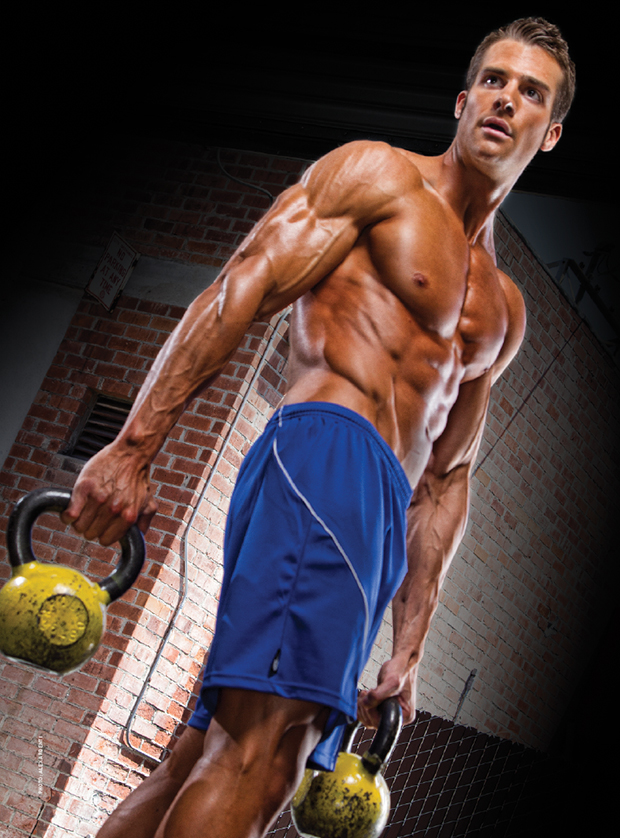
One Google search on “high-intensity interval training science” yields over 10 pages of “scholarly research” articles on the subject. “high-intensity interval training fat loss” yields just as many; there’s clearly a correlation here. The days of two 45-minute sessions of low-intensity steady state cardio (LISS) are numbered. People are jumping on the HIIT bandwagon, and for good reason: It’s more effective. If you work your way through any number of scientific journal articles, especially recent ones, you’ll see how researchers are touting the benefits of interval training (for both exercise and cardio protocols) and athletes are reaping the benefits. More calories burned in less time. More excess post-exercise oxygen consumption. Enhanced fat oxidation. Improved glucose tolerance. Need more proof? Try Google. Either way, the point has been made and proven that performing short bouts of high intensity followed by a period of rest or active recovery is better than what we know as traditional cardio for fat loss.
Enter CrossFit, ladies and gents! CrossFit is defined as “constantly varied high intensity functional movement.” The first and last part of this sentence means that the CrossFit style of training combines continuous movement, the use of many different muscle groups, and movements that you would see in everyday life, such as pushes, pulls, and carries. With that combination, fat loss isn’t just imminent, it’s guaranteed. The goal is a raised heart rate over the entirety of the workout, and that’s where the “high intensity” part comes in. Intensity is a measure (in physics) of how quickly you get real work done. It’s not just a matter of opinion (e.g., who’s the loudest grunter in the gym), but rather, a mathematical equation involving average power, force, distance, and time. The more work you do in less time, the higher the power output and the harder your workout becomes. What all of this means to you is more fat loss! So, why wouldn’t you try it? Have we convinced you yet? Keep in mind that a MetCon is usually programmed for five to 30 minutes, max. So grab your computer, grab a MetCon off a reputable CrossFit affiliate website, grab a training partner, and then grab your puke bucket.
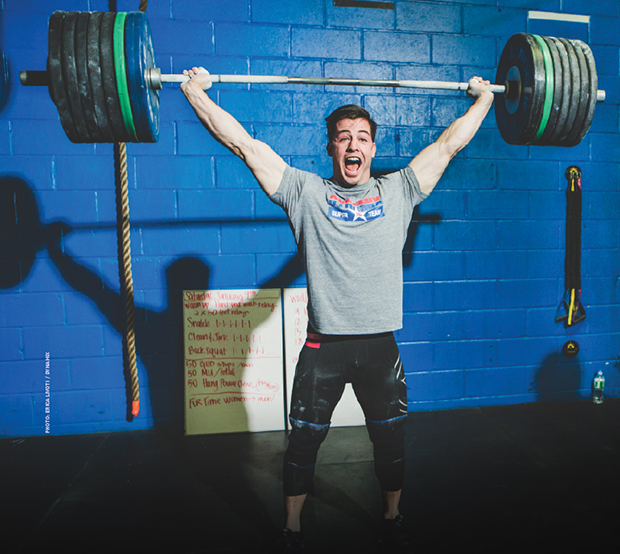
Beware! Before you embark on your own CrossFit adventure or even just give our sample workout a try, here’s a little warning: CrossFit is intense. And complex. And heavy. Like any sport, CrossFit can be dangerous if you aren’t performing it safely, under correct guidance. Alternatively, if you’re injured, CrossFit can still help you get fit without doing any of the movements that may exacerbate your injuries; but check with a coach or trainer first. Most injuries in CrossFit come from the athlete not following instruction, overtraining, and/or not taking care of his or her own body, not because of the movements themselves.

And one last shout-out/caveat to the women out there who are concerned about bulky abs, bulky thighs, and bulky muscles in general: stop it. If you’re reading this magazine, we already know you’re a fan of muscle, so don’t even pretend like you’re not. More importantly, however, you should know that having muscle isn’t just a matter of how you train; it’s a whole lifestyle. You have to eat for muscle, but you also have to have the genetic predisposition that enables you to produce a lot of testosterone. If Mother Nature wanted you to look like a dude, she would’ve made you a dude. But she didn’t, and you’re not, so don’t worry about CrossFit doing it for her.
Coach’s corner:
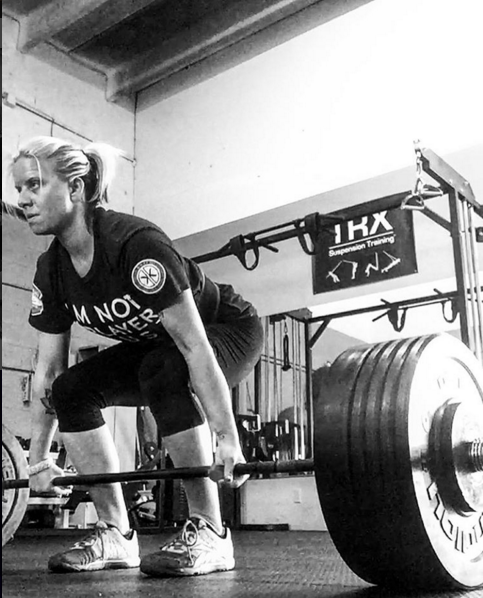
Becca Hargreaves is one of the most intense, dedicated, successful coaches on the CrossFit circuit in the US. This woman is so bad-ass that she started coaching gymnastics at age 14. She went on to compete in collegiate gymnastics at Southern Connecticut State University, where she was the Eastern Conference balance beam champion (and beat a number of current high-profile CrossFit athletes). In 2006, Becca moved to Florida to expand her business, coach more professional athletes, and complete her CrossFit L-1 and CrossFit Gymnastics certifications. In 2016, her coaching roster both in person and online reads like a “who’s who” of elite athletes.
MUSCLE INSIDER: There’s an expression that says “You can turn a runner into an athlete, but you can’t turn an athlete into a runner.” meaning that it’s much harder to develop the lungs and mechanics of running than it is to pick up a sport. If we change the word “runner” to “CrossFitter,” do you believe this? Can anyone do CrossFit, or should you have a base?
Becca Hargreaves: CrossFitters are athletes, and many athletes do CrossFit. It’s such a predominant sport at the moment, and has been for the past nine years because of its accessibility. Anyone can do at least a variation of it. Having a background in a specialized sport like gymnastics, weightlifting, track, etc. would definitely make the transition into CrossFit faster, but I don’t believe that you need a base for CrossFit. I believe that anyone can do it, to either use it to enhance their sport or turn it into competing for a chance to podium at the CrossFit Games.
CrossFit is constantly varied high-intensity functional movement. Our youth all the way up to our grandparents can—and do—CrossFit. There are stories of people changing their bodies and their lives through CrossFit. There is an ongoing list of movements found in CrossFit. You can enroll in on-ramp programs when first joining CrossFit that start with the very basics. We are able to scale movements, weights, and workouts.
MI: Why do you have to be well-rounded for CrossFit? Why can’t you just be a “strength guy” or a marathon runner?
BH: CrossFit is a combination of 10 different modalities: cardiovascular and respiratory endurance, stamina, strength, flexibility, power, speed, coordination, agility, and balance. While a “strength guy” focuses specifically on strength conditioning and a marathon runner focuses mainly on his endurance, if he lacks the remaining modalities, he wouldn’t excel in CrossFit next to a person who works equally on all of them.
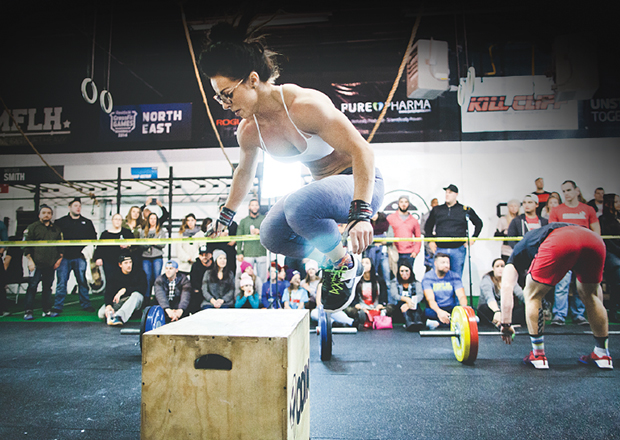
Most CrossFit workouts are based on time; therefore, if you struggle with a single modality, it can affect your overall performance. For example, you don't often see a “strength guy” handstand walk twenty feet or run a six-minute mile. It is also rare to see a marathon runner clean and jerk numbers in the hundreds. A CrossFitter needs to be able to do all of these things and more, and do them well, all while racing the clock.
CrossFit pulls pieces of different sports and wraps then into one, to make the “fittest man or woman on earth.” Common athletics seen in CrossFit include gymnastics, Olympic weightlifting, and cardio. A CrossFit workout often consists of at least one movement from each of these categories, including some unknown. Because of this, athletes who want to excel in CrossFit must have a more balanced and well-rounded workout regimen.
MI: How often and how long should the MetCons be for fat loss? Would this protocol change for beginner, intermediate, or advanced athletes? How?
BH: In a MetCon, just like in weightlifting, all the components can be scaled depending on the level of the athlete. The time of the MetCon can be altered, as can weight load and difficulty of skills. As example of scaling a gymnastic skill, if the workout calls for a handstand push-up, then an advanced athlete would do it as prescribed, an intermediate athlete would do a regular push-up (from their feet), and a beginner might do a push-up from their knees. An example of scaling the weight load would be a loaded barbell squat for advanced athletes, unweighted barbell squats for intermediate, and body weight squats for a beginner.
The length of the MetCon isn’t necessarily linked to fat loss, as much as the intensity and effort is. With that said, regardless of what level you’re on, the higher you keep the intensity and effort for the duration of the workout will determine how quick the weight loss is. Obviously a more conditioned athlete can handle a longer workout, so if you can go longer (closer to 30 minutes than five) go for it!
MI: In bodybuilding, we often say that you can’t out-train a bad diet; but CrossFitters burn thousands of calories a day because of their specific type of training. What’s your nutrition advice to athletes who want to get lean, but not sacrifice muscle?
BH: In my opinion, overall health and wellness is the main goal. Just because athletes burn thousands of calories a day, that doesn’t mean it’s healthy to sabotage your body with a bad diet. Each individual thrives on different diets. My suggestion is eating close to the earth; leafy greens and other vegetables should be the bulk of our diet, then proteins and healthy fats should accompany that. Processed foods full of chemicals are cheap and convenient, and they’re making our society extremely unhealthy. It’s important that we listen to our bodies. The main goal should be getting healthy from the inside out. Athletes who want to get lean but not sacrifice muscle should stay on a diet that works for them, in terms of quantity and quality of calories. Also, make sure to monitor body fat using the mirror and other methodologies to ensure you’re dropping body fat and not muscle while burning so many calories.
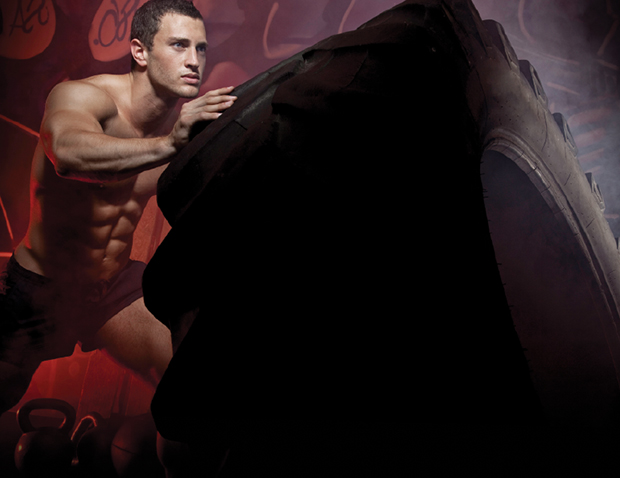
Sample CrossFit conditioning routine:
20 Min AMRAP (As Many Rounds/Reps As Possible)
Run 200 m
5 clean and jerks at 95 lb./135 lb.
10 burpees
15 sit-ups
10 kettlebells at 24 kg
5 dumbbell snatches (each arm) 25 lb./35 lb.
Row 200 m
To check out Jaime's recent article, where she breaks down Crossfit and Bodybuilding to compare the two, click here!

